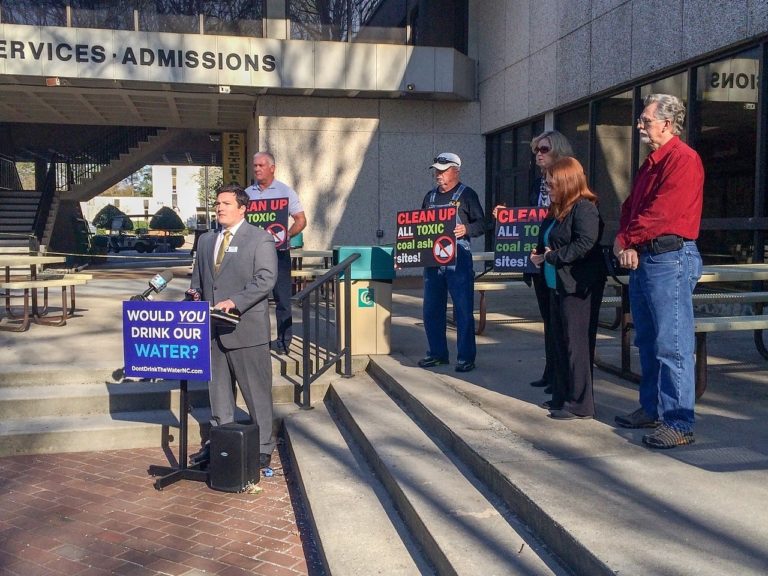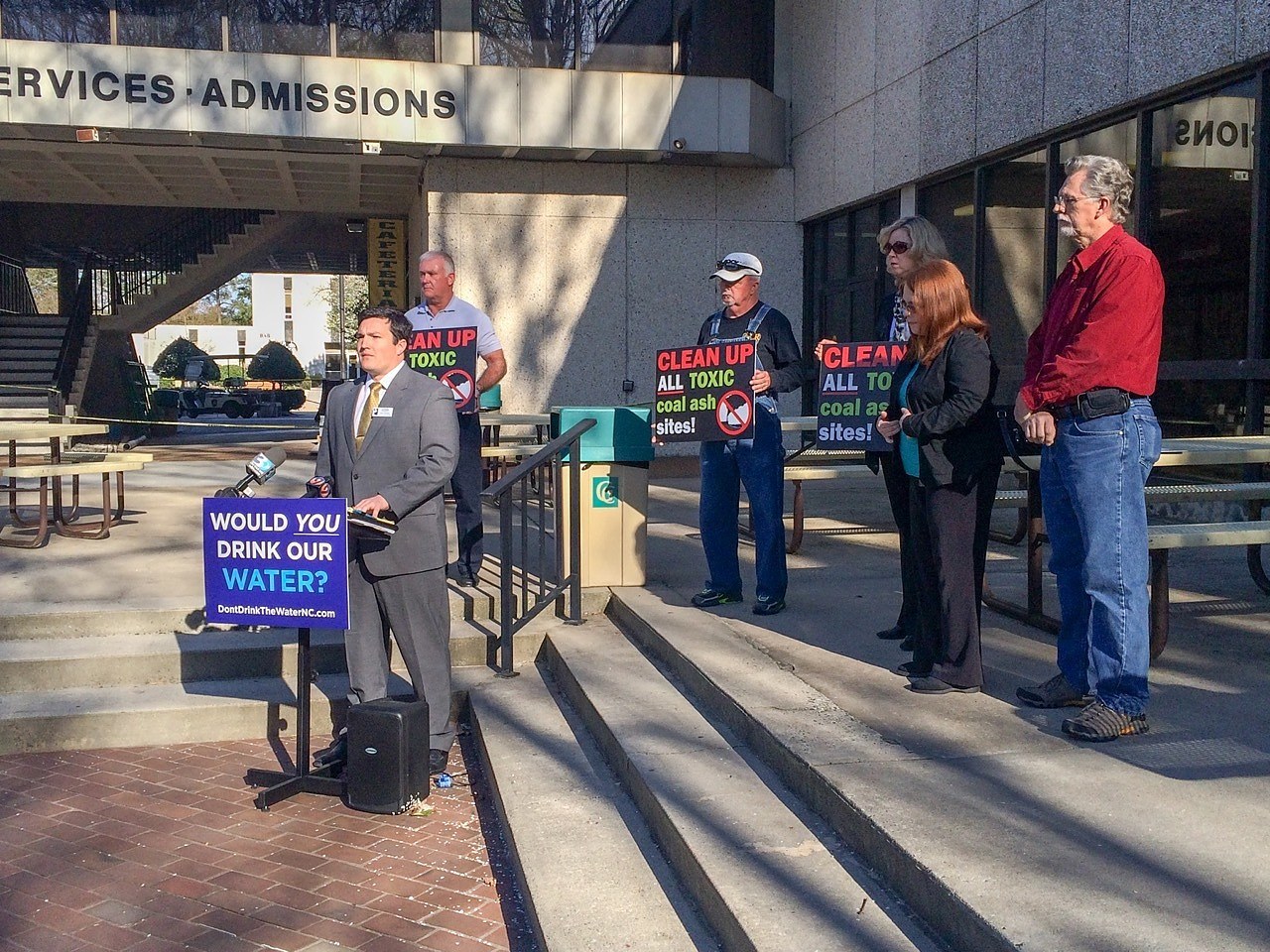
My name is Peter Harrison, I am a resident of Durham, NC, and I am an attorney for Waterkeeper Alliance. My comments tonight will focus on the right of public participation, while I will submit more technical written comments on the proposed risk classifications for the Allen Steam Station. All of my comments will support my position that the leaking coal ash impoundments at Allen cannot be classified as “low-priorities” because doing so will allow Duke Energy to leave giant stores of toxic waste in leaking, unlined pits, condemning the site and the people in the surrounding area to perpetual contamination. The coal ash at Allen must be removed and transferred to dry, lined landfills that do not pose a risk to water supplies and surrounding communities, that is, the impoundments at Allen must be deemed intermediate- or high- priorities.
While the McCrory administration was under federal criminal investigation for its relationship with Duke Energy, the General Assembly enacted the Coal Ash Management Act of 2014 (CAMA). CAMA provides the public with the right to participate in the process of site classification, so important decisions about Duke Energy’s coal ash would not be made solely by the McCrory administration. CAMA lays out a list of factors to be considered in classifying coal ash sites for cleanup, such as risk to drinking water supplies, dam safety, surface water impacts, groundwater contamination, and other locational factors.

CAMA placed the onus on Duke Energy itself to generate data that would be used by DEQ and the public to evaluate the factors that should dictate site classifications. Unfortunately, the public’s window of opportunity to participate in the classification process has arrived, yet Duke Energy has not provided all of the information or corrections it was required to provide—through a combination of providing erroneous data, failing to meet deadlines, and designing site assessments that leave unanswered important questions about potential offsite effects of contamination—ultimately forcing DEQ to issue proposed site classifications without the information necessary to make such determinations. Now Duke’s failures are undermining the value of the public right to participate in the process. Without all the information needed to determine the fate of the toxic waste at Allen, DEQ has reserved the option of deeming the ash dumps at Allen—and by extension the community around it—low priorities where ash may be left in leaking pits until the end of time. This is unacceptable. Duke Energy should not benefit from the doubt it has created, and should be required to remove all the coal ash at Allen.
In spite of Duke Energy’s failures to provide complete, accurate data, its own reports do answer the question of the day: Is it possible to leave the coal ash where it is in Belmont, while stopping off-site contamination and threats to public health? Duke’s answer to this question is “no.” According to Duke’s own data, leaving the ash in place at Allen will leave ash steeping in about 40 feet of groundwater, resulting in off-site contamination for at least the next 100 years. Thus, the “low-priority” classification Pat McCrory’s DEQ is still considering for Allen would, according to Duke, result in continued illegal pollution for the at least the next 100 years.